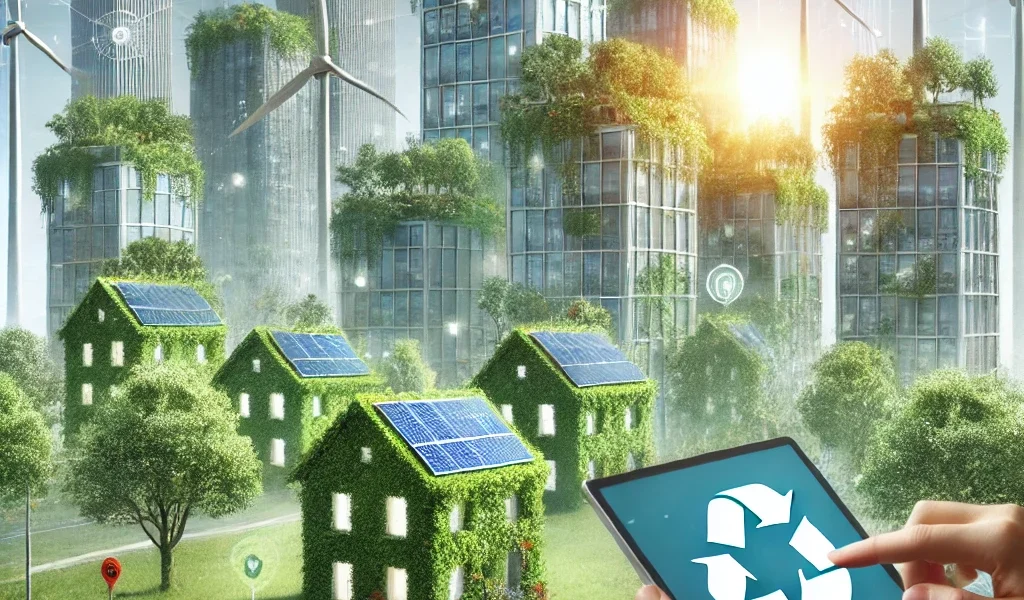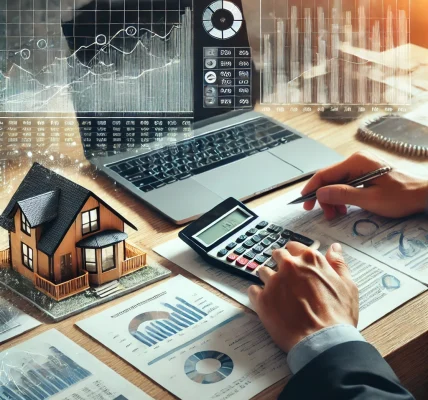Introduction
Sustainability is no longer a trend—it’s the future of real estate. As environmental concerns grow and governments implement stricter regulations, green real estate investments have become a smart choice for forward-thinking investors. Sustainable properties not only reduce carbon footprints but also offer long-term financial benefits, such as lower operating costs, higher property values, and increased tenant demand.
This DIY guide explores the essentials of green real estate investment, the latest trends, financial benefits, and strategies to maximize returns while ensuring compliance with environmental laws.
Understanding Green Real Estate
What Is Green Real Estate?
Green real estate refers to properties designed, built, and maintained using eco-friendly practices. These properties focus on energy efficiency, resource conservation, and reduced environmental impact. Features may include solar panels, energy-efficient appliances, smart home technology, and sustainable building materials.
Why Invest in Sustainable Real Estate?
- Rising Demand: Eco-conscious buyers and tenants prefer green properties.
- Government Incentives: Tax credits and subsidies for sustainable upgrades.
- Cost Savings: Lower utility bills through energy-efficient systems.
- Resilience to Regulations: Compliance with evolving environmental laws.
- Higher Resale Value: Green-certified properties command premium prices.
Key Trends Shaping Green Real Estate in 2025
1. Net-Zero Energy Homes
Net-zero homes produce as much energy as they consume through renewable sources like solar and wind power. These properties are becoming more affordable due to advances in technology and government incentives.
2. Smart Building Technology
Automation systems help optimize energy use, water conservation, and security. Features include:
- Smart thermostats
- Motion-activated lighting
- AI-driven energy management systems
3. Green Certifications and Standards
Properties certified by organizations like LEED (Leadership in Energy and Environmental Design) or ENERGY STAR are in high demand. These certifications validate a building’s sustainability and energy efficiency.
4. Sustainable Construction Materials
Eco-friendly materials such as recycled steel, bamboo flooring, and low-VOC paints are now mainstream. These materials reduce environmental impact and improve indoor air quality.
5. Urban Green Spaces & Vertical Gardens
Developers are incorporating rooftop gardens, green walls, and urban forests into property designs to improve air quality and enhance aesthetics.
How to Invest in Green Real Estate
1. Buying Green Certified Properties
Invest in properties that already meet sustainability standards like LEED, BREEAM, or ENERGY STAR. These properties are easier to market and retain value over time.
2. Renovating Existing Properties
Transform traditional properties into sustainable investments by:
- Installing solar panels and energy-efficient windows.
- Upgrading HVAC systems with smart thermostats.
- Using water-saving fixtures and rainwater harvesting systems.
3. Investing in REITs with Green Portfolios
Green Real Estate Investment Trusts (REITs) allow investors to gain exposure to sustainable properties without direct ownership. These REITs focus on eco-friendly developments and energy-efficient buildings.
4. Building Eco-Friendly Rental Units
Short-term and long-term rentals with green features attract environmentally conscious tenants willing to pay higher rent for sustainability benefits.
Financial Benefits of Green Real Estate
1. Lower Operating Costs
Energy-efficient homes significantly reduce electricity, heating, and cooling expenses, increasing overall profitability.
2. Higher Rental Income
Eco-friendly properties attract premium tenants who are willing to pay more for sustainable living.
3. Increased Property Value
Studies show that green-certified properties appreciate faster and sell for higher prices than traditional homes.
4. Tax Benefits & Government Incentives
Many countries offer tax credits, rebates, and grants for sustainable building practices. Investors can take advantage of these to lower their overall investment costs.
Legal Considerations and Compliance
1. Building Codes & Zoning Laws
Ensure compliance with local, state, and national regulations regarding sustainable building practices and energy efficiency requirements.
2. Tenant and Lease Agreements
For rental properties, include clauses that encourage energy conservation and outline shared responsibilities for maintaining green features.
3. Environmental Impact Assessments
Large developments may require environmental assessments to ensure they meet sustainability and conservation guidelines.
4. Tax Laws & Incentives
Understand the tax benefits available for green investments, such as property tax exemptions, renewable energy credits, and depreciation deductions for energy-efficient upgrades.
DIY Steps to Make a Property More Sustainable
- Conduct an Energy Audit – Identify areas where energy consumption can be reduced.
- Upgrade Insulation & Windows – Prevent heat loss and improve temperature regulation.
- Install Renewable Energy Systems – Solar panels, wind turbines, and geothermal heating.
- Use Smart Technology – Invest in smart lighting, thermostats, and water-saving devices.
- Improve Water Efficiency – Low-flow toilets, rainwater harvesting, and drought-resistant landscaping.
- Choose Sustainable Materials – Bamboo, reclaimed wood, and recycled metal.
Future of Green Real Estate Investment
- Advancements in Sustainable Technology: AI-driven energy systems and self-sustaining homes will become more common.
- Stricter Government Regulations: Investors who adopt green strategies early will benefit from future regulations.
- Increasing Buyer & Tenant Awareness: Sustainable properties will dominate the real estate market as demand rises.
- Integration of Blockchain & ESG Standards: Transparency in property sustainability credentials will be enhanced through blockchain technology.
Conclusion
Green real estate investment is more than just an ethical choice—it’s a profitable one. Sustainable properties reduce costs, attract high-value tenants, and comply with evolving regulations, ensuring long-term financial gains.
By incorporating eco-friendly features, securing green certifications, and taking advantage of government incentives, investors can future-proof their real estate portfolios. The transition to sustainable property investments is not only a necessity for the planet but also a smart financial move in an increasingly eco-conscious market.




